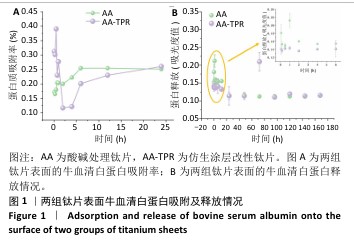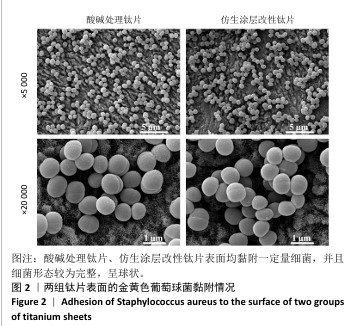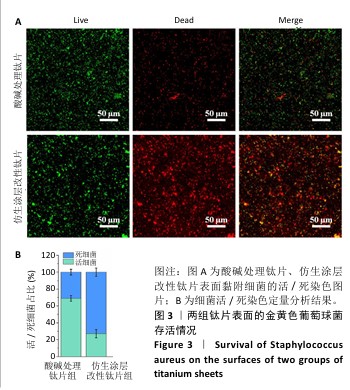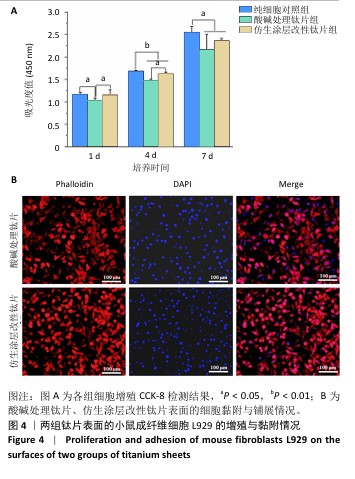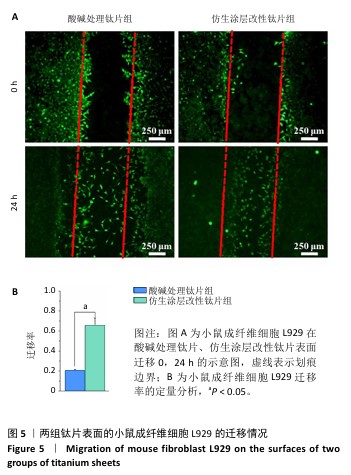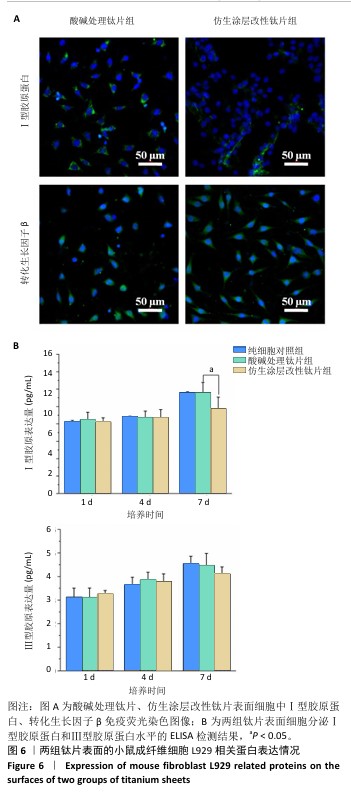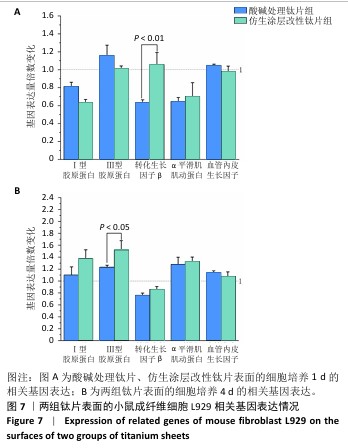[1] SHRIVAS S, SAMAUR H, YADAV V, et al. Soft and Hard Tissue Integration around Percutaneous Bone-Anchored Titanium Prostheses: Toward Achieving Holistic Biointegration. ACS Biomater Sci Eng. 2024;10(4): 1966-1987.
[2] ABDALLAH MN, BADRAN Z, CIOBANU O, et al. Strategies for Optimizing the Soft Tissue Seal around Osseointegrated Implants. Adv Healthc Mater. 2017;6(20).doi: 10.1002/adhm.201700549.
[3] WEIGEL T, CHRIST B, DEMBSKI S, et al. Biomimetic Connection of Transcutaneous Implants with Skin. Adv Healthc Mater. 2023;12(30): e2301131.
[4] SHAO J, KOLWIJCK E, JANSEN J A, et al. Animal models for percutaneous-device-related infections: a review. Int J Antimicrob Agents. 2017;49(6):659-667.
[5] MURPHY NJ, GRAAN D, BALOGH ZJ. Percutaneous Titanium Elastic Nail Stabilization for Pelvic and Acetabular Fractures: Surgical Technique and Case Series. J Orthop Trauma. 2024;38(11):e371-e378.
[6] ZHOU M, WANG J, WANG J, et al. Construction of a Localized and Long-Acting CCN2 Delivery System on Percutaneous Ti Implant Surfaces for Enhanced Soft-Tissue Integration. ACS Appl Mater Interfaces. 2023;15(19):22864-22875.
[7] DING T, ZHANG L, HAN J, et al. Photo-Responded Antibacterial Therapy of Reinfection in Percutaneous Implants by Nanostructured Bio-Heterojunction. Small. 2023;19(7):e2206265.
[8] WAN R, LI W, YANG K, et al. Immunomodulatory and bone regenerative properties of copper/procyanidins-modified titanium surfaces. Biomater Adv. 2025;169:214199-214199.
[9] TAN J, LI L, LI B, et al. Titanium Surfaces Modified with Graphene Oxide/Gelatin Composite Coatings for Enhanced Antibacterial Properties and Biological Activities. ACS Omega. 2022;7(31):27359-27368.
[10] DIAS LFG, COSTA RC, SACRAMENTO CM, et al. Tailoring bisphosphonate-doped titanium films to optimally couple cellular responses and antibacterial activity for biomedical applications. Biointerphases. 2024;19(3):031002.
[11] WANG WR, LI J, GU JT, et al. Optimization of Lactoferrin-Derived Amyloid Coating for Enhancing Soft Tissue Seal and Antibacterial Activity of Titanium Implants. Adv Healthc Mater. 2023;12(11): e2203086.
[12] 唐恺,王富,陈吉华.钛表面的仿生改性促进软组织黏附研究进展[J].中国实用口腔科杂志,2022,15(6):740-744.
[13] NICOLÒ A, RENKO VD. Biomedical applications of solid-binding peptides and proteins. Materials Today Bio. 2023;19:100580.
[14] WERONIKA J, JOANNA M, KAROLINA P, et al. Phage display and other peptide display technologies. FEMS Microbiol Rev. 2021;46(2):fuab052.
[15] WU J, YANG M, HUANG Y, et al. Enhancing the Biological Performance of Titanium Alloy through In Situ Modulation of the Surface Nanostructure: Near-Infrared-Responsive Antibacterial Function and Osteoinductivity. ACS Appl Bio Mater. 2024;7(6):3900-3914.
[16] 刘婉珍,周文昊,白天,等.钛基植入物表面抗菌涂层改性的研究进展[J].中国材料进展,2024,43(11):988-994.
[17] 王泽华,程佳蕙,高啟坤,等.钛纳米管表面固定GL13K抗菌肽的实验研究[J].安徽医科大学学报,2019,54(2):251-255.
[18] 谭婧.经皮钛植入体的纳米结构化表面改性及其生物学性能[D].成都:西南交通大学,2017.
[19] SUN Y, TAN J, WU B, et al. Identification and binding mechanism of phage displayed peptides with specific affinity to acid–alkali treated titanium. Colloids Surf B Biointerfaces. 2016;146:307-317.
[20] LI Y, FELLANDER-TSAI L. The bone anchored prostheses for amputees - Historical development, current status, and future aspects. Biomaterials. 2021;273:120836.
[21] STICH T, ALAGBOSO F, KŘENEK T, et al. Implant-bone-interface: Reviewing the impact of titanium surface modifications on osteogenic processes in vitro and in vivo. Bioeng Transl Med. 2021;7(1):e10239.
[22] ZHANG C, PAN Y, DUAN G, et al. A biomimetic calcium phosphate nanowire coating on titanium surface enhances osteoimmunomodulation and osteointegration. Composites Part B. 2024;280. doi:10.1016/j.compositesb.2024.111480
[23] 程新奇,邵龙辉,沈华侨,等.铜锶二元掺杂硅酸钙涂层改性钛合金的促成骨和抗菌效应[J].中国组织工程研究,2025,29(22): 4639-4646.
[24] TOLLABI M, POURSALEHI Z, MEHRAFSHAR P, et al. Insight into the role of integrins and integrins-targeting biomaterials in bone regeneration. Connect Tissue Res. 2024;65(5):343-363.
[25] LIU L, WANG J, LI Y, et al. Laminin 332-Functionalized Coating to Regulate the Behavior of Keratinocytes and Gingival Mesenchymal Stem Cells to Enhance Implant Soft Tissue Sealing. Regen Biomater. 2022;9:rbac054.
[26] BODA SK, APARICIO C. Dual Keratinocyte-Attachment and Anti-Inflammatory Coatings for Soft Tissue Sealing around Transmucosal Oral Implants. Biomater Sci. 2022;10(3):665-677.
[27] VILLEGAS M, BAYAT F, KRAMER T, et al. Emerging Strategies to Prevent Bacterial Infections on Titanium-Based Implants. Small. 2024;20(46): e2404351.
[28] 严新安,WALTER M,林弋翔,等.临床细菌生物膜感染新型治疗方案研究进展[J].华西医学,2023,38(8):1276-1280.
[29] MU S, ZHU Y, WANG Y, et al. Cationic Polysaccharide Conjugates as Antibiotic Adjuvants Resensitize Multidrug-Resistant Bacteria and Prevent Resistance. Adv Mater. 2022;34(41):e2204065.
[30] KHAN SA, SHAKOOR A. Recent Strategies and Future Recommendations for the Fabrication of Antimicrobial, Antibiofilm, and Antibiofouling Biomaterials. Int J Nanomedicine. 2023;18:3377-3405.
[31] LI Y, TAN J, LIU Z, et al. Antibacterial Activity and Cyto-/Tissue-Compatibility of Micro-/Nano-Structured Titanium Decorated with Silver Nanoparticles. J Biomed Nanotechnol. 2018;14(4):675-687.
[32] MEININGER M, MEININGER S, GROLL J, et al. Silver and copper addition enhances the antimicrobial activity of calcium hydroxide coatings on titanium. J Mater Sci Mater Med. 2018;29(5):61.
[33] SHARMA S, RAI VK, NARANG RK, et al. Collagen-based formulations for wound healing: A literature review. Life Sci. 2022;290:120096.
[34] LICHTMAN MK, OTERO-VINAS M, FALANGA V. Transforming growth factor beta (TGF-β) isoforms in wound healing and fibrosis. Wound Repair Regen. 2016;24(2):215-222.
[35] LE LTT, GIANG NN, CHIEN PN, et al. Enhancement of Wound Healing Efficacy by Chitosan-based Hydrocolloid on Sprague Dawley Rats. In Vivo. 2023;37(3):1052-1064. |
